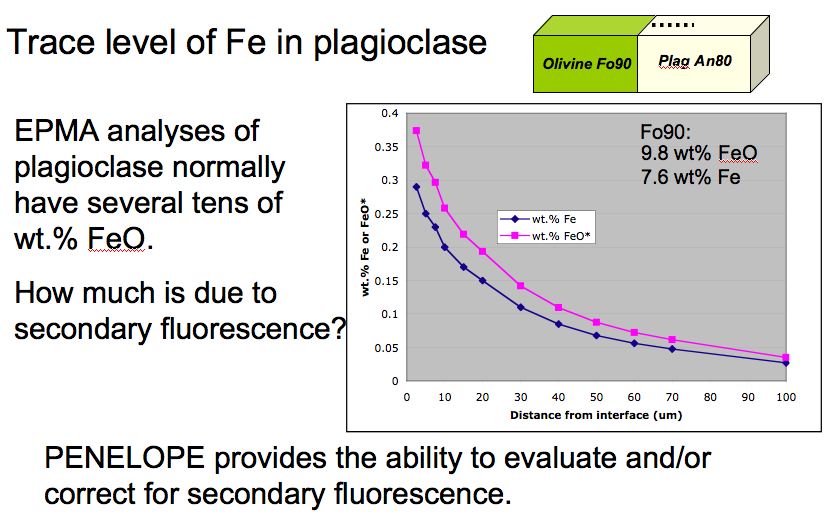
Fe in plagioclase has been studied by some people for possible implications regarding Mg/Fe crystallization conditions. It is typically measured by EPMA at a low but clearly measureable level, usually in the 0.1-0.3 wt% FeO range. In separated grains, there is no issue, but for in situ plagioclase where there is adjacent Fe-rich material (e.g. Fe-oxide, olivine, px, or basaltic glass), there is the possibility that some of the Fe is an artifact of secondary fluorescence.
In 2004*, one of the students in the Geo777 probe class ran some Penepma simulations, shown here:

The 15 kV simulation above demonstrates that 10 microns from Fo90 olivine, there is 0.25 wt% FeO, and out to 40 microns the level is still near 0.10 wt%. It magnetite were also present, there would be an even higher apparent (fictious) amount of FeO present, due to secondary fluorescence.
*Fall 2004 students Jacques Kelly, Justin Gosses, Caroline Webber, Kathy Staffier
Return to Secondary Fluorescence page